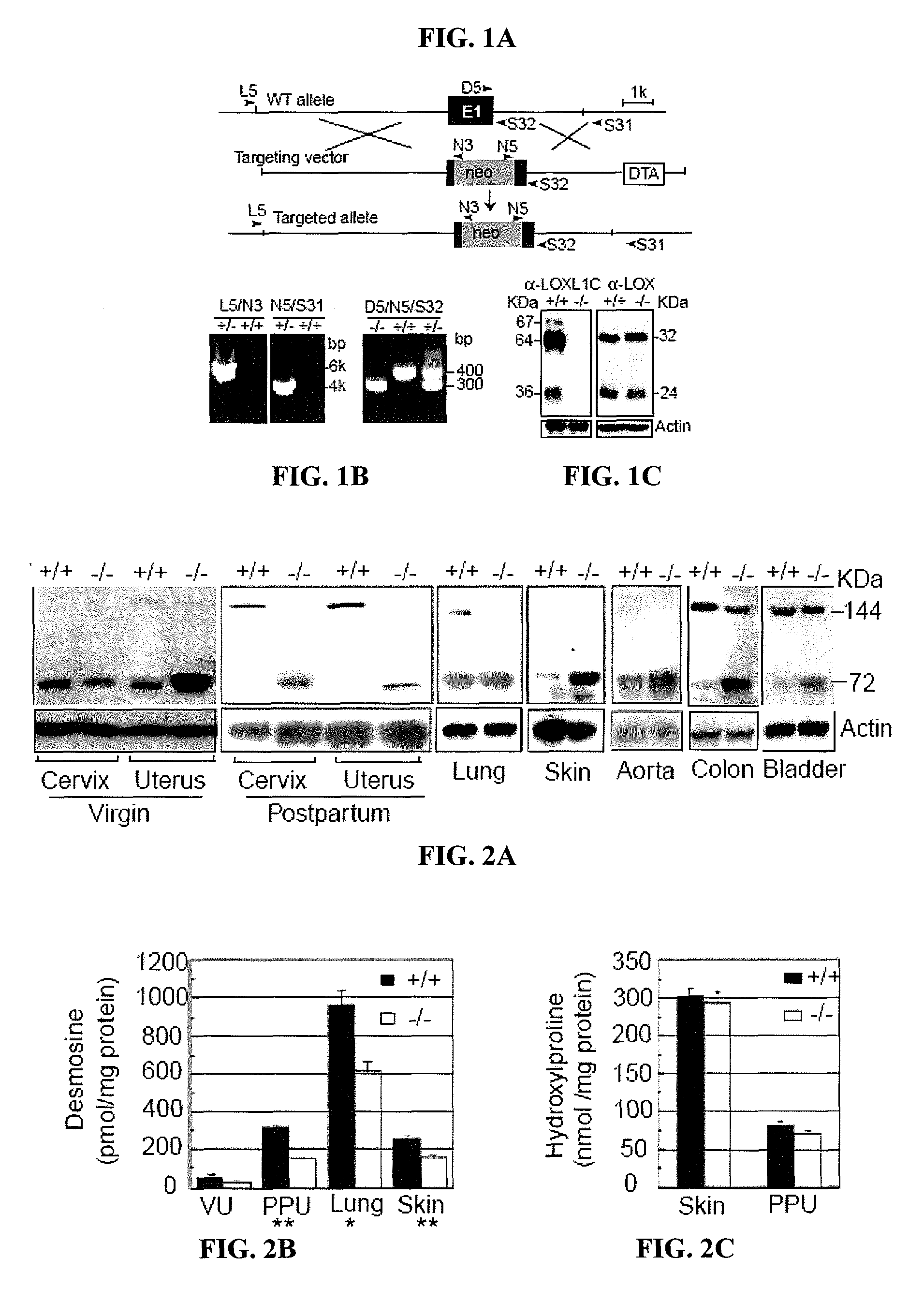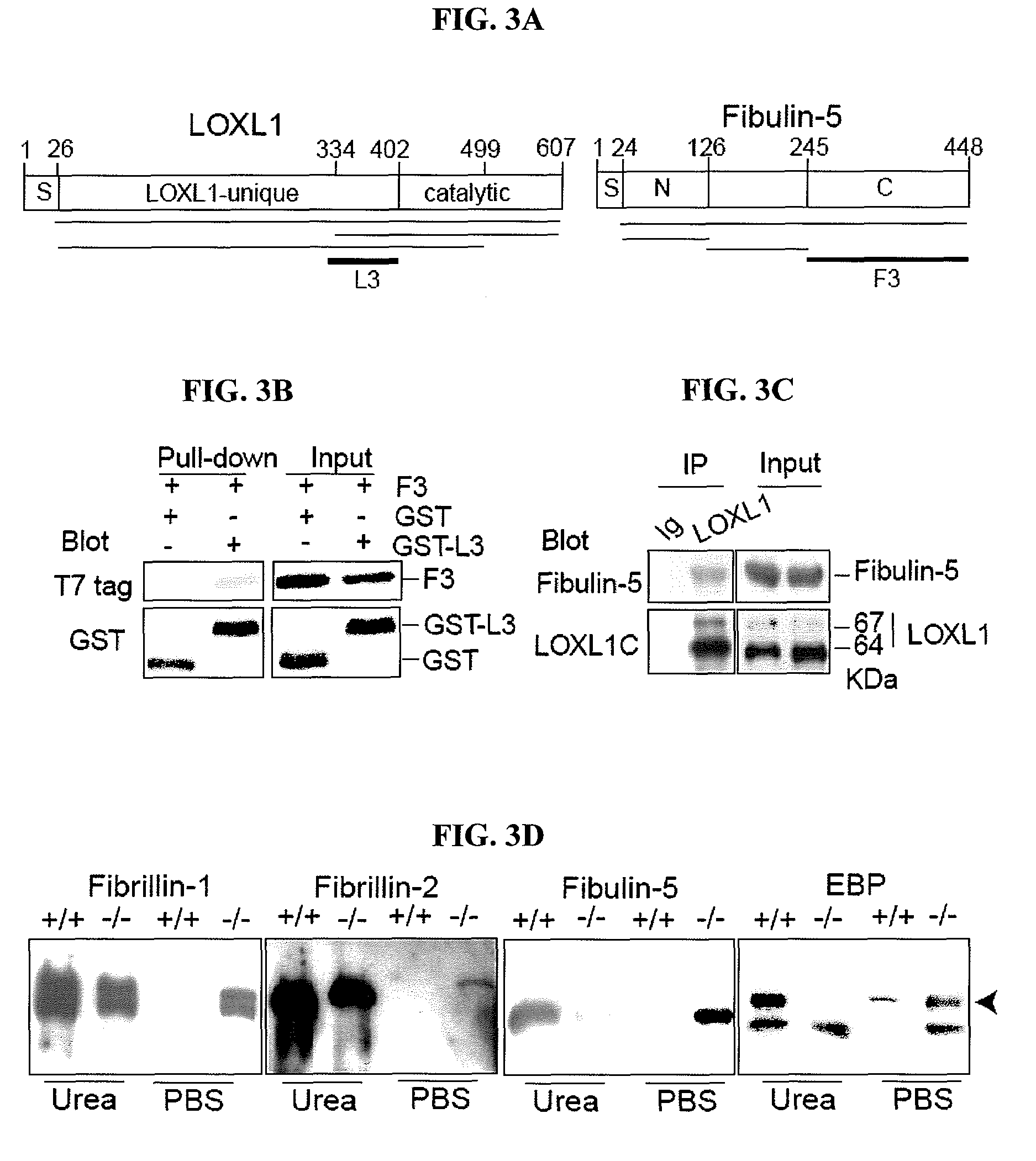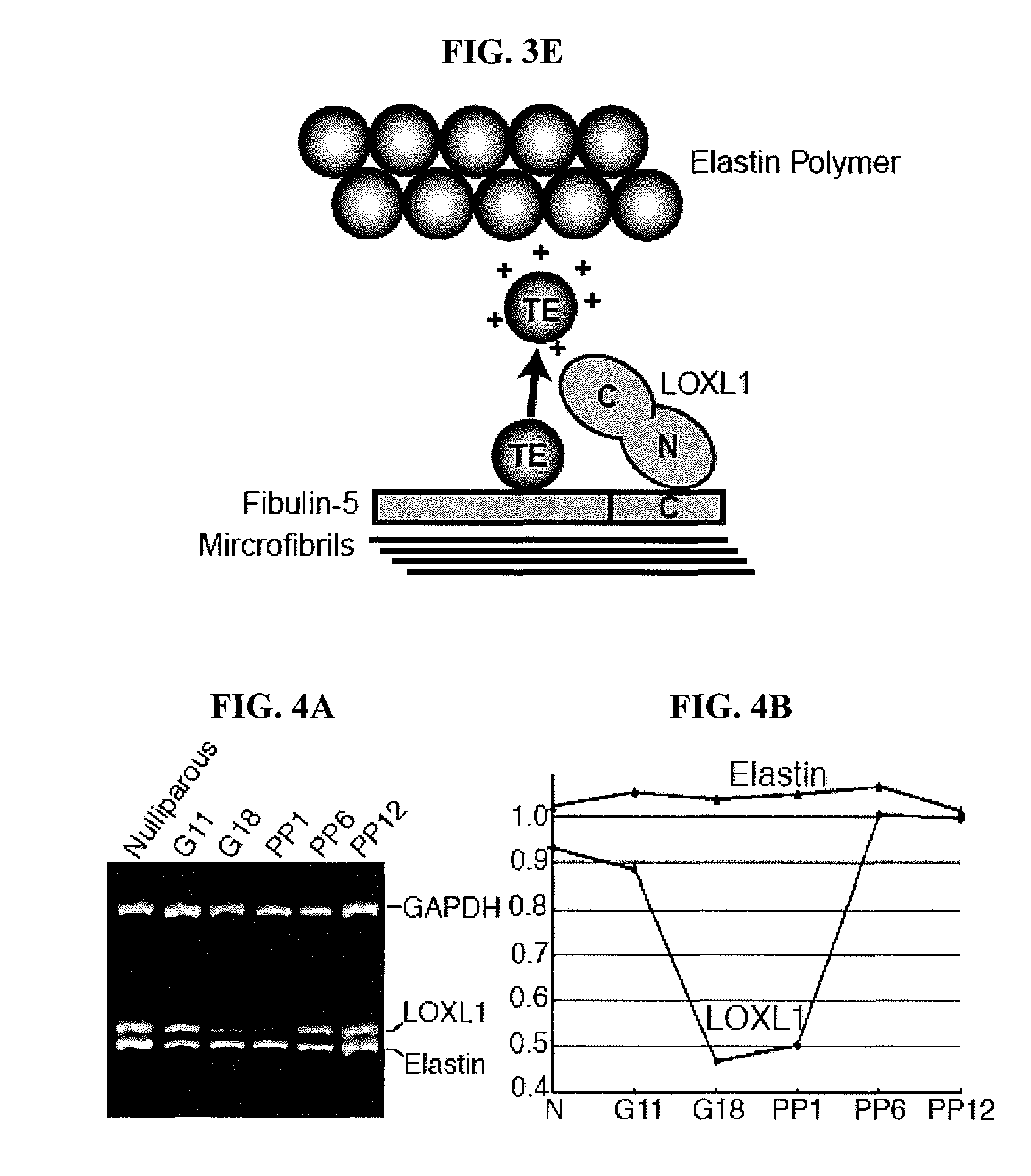Lysyl oxidase-like 1 (LOXL1) and elastogenesis
a technology of lysyl oxidase and elastogenesis, which is applied in the field of lysyl oxidaselike 1 (loxl1) and elastogenesis, can solve the problems of urinary incontinence and gradual depletion of functional elastic fibers, and achieve the effects of increasing endogenous expression, boosting the enzymatic activity of existing loxl1, and boosting the activity of loxl1
- Summary
- Abstract
- Description
- Claims
- Application Information
AI Technical Summary
Benefits of technology
Problems solved by technology
Method used
Image
Examples
example 1
LOXL1 Expression in Normal Mice
[0114]To investigate the expression pattern of LOXL1 in normal mice, immunolocalization experiments were performed.
[0115]Two polyclonal anti-LOXL1 antibodies and one anti-LOX antibody were generated by immunizing rabbits with His-tagged recombinant polypeptides (based on GenBank accession nos. AAK97375 and AAH18439). One antibody, α-LOXL1N (spanning amino acid residues 175-313 of murine LOXL1) is unique to LOXL1, but it does not recognize the cleavage product (36 kDa; FIG. 1C). Three LOXL1 variant polypeptides are seen in FIG. 1C: a 64 kDa matching the predicted full-length form absent the secretory signal peptide, a 67 kDa band presumed to be the full-length form with the signal peptide, and a 36 kDa band matching the cleavage product retaining the C-terminal conserved domain (Borel et al., J. Biol. Chem. 276, 48944-48949 (2001)). The latter interpretation is supported by the observation that this band was not detected by the LOXL1N antibody. Immunobl...
example 2
LOXL1 Knockout Mice
[0122]To investigate a possible role for LOXL1 in elastogenesis, its expression was ablated in mice by gene targeting (FIGS. 1A-B). Briefly, 6-kb and 3-kb genomic fragments flanking exon 1 of the Loxl1 gene (GenBank Accession is BC037999) were amplified by PCR from 129 / Sv mouse DNA. These fragments were cloned into the pGT-N29 vector on either side of the neon gene. The targeting vector also contained a diphtheria toxin expression cassette (DTA) as a negative selection marker (FIG. 1A). The targeting vector was linearized and electroporated into R1 embryonic stem (ES) cells. Multiple targeted ES clones were identified by PCR (FIG. 1B), and targeted clones were microinjected into C57BL / 6 blastocysts and crossed the chimeras with C57BL / 6 mice. Mice heterozygous or homozygous for the targeted allele were identified by PCR (FIG. 1B). Primer sequences are shown in Table 1. Fibulin-5 homozygous mutant mice were previously described (Yanagisawa et al., Nature 415, 168-17...
example 3
Elastic Fiber Anatomy in the Uterine Tract of LOXL1 Knockout Mice, Pre- and Post-Partum
[0126]To investigate the elastic fiber anatomy in the uterine tract of LOXL1 knockout mice, immunolocalization experiments were performed.
[0127]Mouse tissues were fixed in 4% formaldehyde, and embedded them in paraffin. Histochemical (Verhoeff and Hart's stain) staining and histologic examinations of multiple tissues were performed on the paraffin-embedded sections using standard methodology. For electron microscopy, the tissues were fixed in 2.5% glutaraldehyde, 1% formaldehyde in sodium cacodylate buffer, and embedded in Epon Immunoblotting and immunofluorescence staining of unfixed cryosections was performed as described (Hong et al., J. Biol. Chem. 276, 12091-12099 (2001)).
[0128]Elastic fibers in the uterine tract of the knockout mice were thick, up to 3 μm in diameter and prominent under Nomarski optics. Uterine elastic fibers appeared normal in nulliparous Loxl1− / − females. Pregnancy and bir...
PUM
| Property | Measurement | Unit |
|---|---|---|
| diameter | aaaaa | aaaaa |
| volume | aaaaa | aaaaa |
| elasticity | aaaaa | aaaaa |
Abstract
Description
Claims
Application Information
 Login to View More
Login to View More - R&D
- Intellectual Property
- Life Sciences
- Materials
- Tech Scout
- Unparalleled Data Quality
- Higher Quality Content
- 60% Fewer Hallucinations
Browse by: Latest US Patents, China's latest patents, Technical Efficacy Thesaurus, Application Domain, Technology Topic, Popular Technical Reports.
© 2025 PatSnap. All rights reserved.Legal|Privacy policy|Modern Slavery Act Transparency Statement|Sitemap|About US| Contact US: help@patsnap.com



